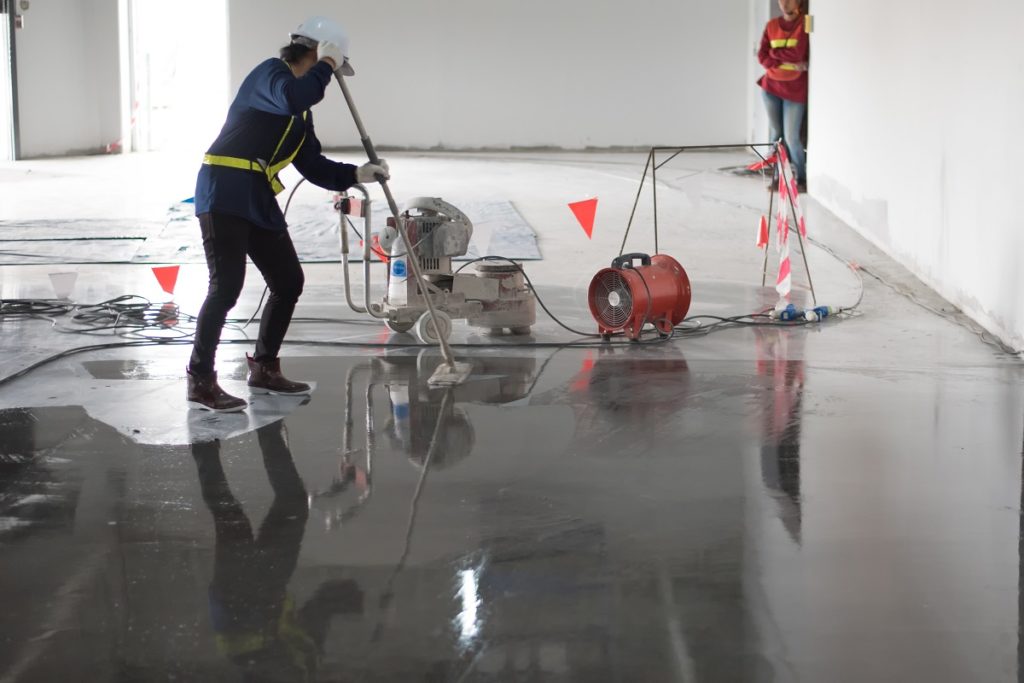Like any other parts of a house, floors are susceptible to wear and tear. Moreover, these surfaces are constantly exposed to different substances, moisture, humidity, and shifting temperatures. Thus, time will come when you need to do a resurfacing project to improve the appearance of your floors.
An ongoing matter in-floor resurfacing is whether epoxy coating or urethane cement is more suitable and provides better output. In this guide, we’ll try to settle this by discussing the characteristics of both epoxy and urethane.
Epoxy Coating
Epoxy is often used for resurfacing concrete floors because it attaches well. Usually, this consists of two primary parts, namely the epoxy resin and curing agent. This formulation allows a safe and fast application, making it ideal for DIY projects.
Other key features of epoxy coating are its durability and aesthetic enhancing ability — it’s available in a wide range of colors and shades and hides cracks efficiently. Due to its versatility, epoxy is a popular choice for flooring in industrial workplaces and locations such as hospitals, warehouses, and factories.
Urethane Cement
 This is a mixture of two fluids and regular cement. It’s able to deliver a solid and sturdy surface due to the incorporation of cement in its formula. As for the aesthetics, the bond that the components produce allows a smoother outcome. There’s also a variety of finish types available, such as glossy and satin, so you can select a finish that matches your preference.
This is a mixture of two fluids and regular cement. It’s able to deliver a solid and sturdy surface due to the incorporation of cement in its formula. As for the aesthetics, the bond that the components produce allows a smoother outcome. There’s also a variety of finish types available, such as glossy and satin, so you can select a finish that matches your preference.
Unlike epoxy, urethane is UV stable, meaning it is more resistant to extreme heat and exposure to sunlight won’t cause it to become yellow over time. Moreover, it’s resistant to scratch, moisture, and decreases bacterial growth. Additionally, it can repel chemicals and other damaging liquids.
However, urethane cement doesn’t easily stick or bond to concrete. Its dry film is also thinner so it is not ideal for filling in cracks in the surfaces of floors. Lastly, its solvent-based solution requires the use of a respirator for applying.
The Verdict
By assessing the key characteristics of the two, you can choose which is more appropriate for your type of flooring. But, if you still can’t make up your mind, why not mix them together?
Yes, you read that right. It’s possible to combine epoxy and urethane cement so you can get both their benefits while achieving an output of superior quality.
Try using a base of epoxy since it’s the one that bonds well with concrete. Then, use urethane for the topcoat so it can be provided with more protection from heat, chemicals, and moisture. The result? A flooring with incredible resistance to abrasion and a higher level of durability.
Still, do keep in mind that this combination is not applicable to all types of floor resurfacing projects. For accuracy and assurance, consult an expert flooring contractor in your area so you can be informed of the material which best suits your flooring requirements. It’s also vital to remember that the solution of epoxy coating and urethane cement can be easily customized to tailor-fit various unique needs.

